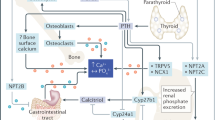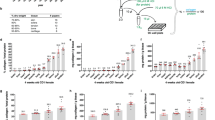Abstract
ALTHOUGH it is generally accepted that free hydroxyproline cannot be utilized for the synthesis of collagen1–3, we have demonstrated in previous papers a close interrelation between the level of free hydroxyproline in tissues of rats4, or in the body of chicken embryos5, and the rate of collagen synthesis (after cortisone administration). In a recent paper Green and Lowther6 presented proofs that the formation of protein-bound hydroxyproline proceeds by way of ‘activated’ proline which is hydroxylated during the incubation in granuloma slices to form ‘activated’ hydroxyproline. The possibility of such a hydroxylation of proline in vitro has been demonstrated recently7. Some hypotheses dealing with collagen synthesis presume in connective tissue the presence of peptide with hydroxyproline, the biochemical existence of which has not yet been proved. In an ultrafiltrate of extracts from bovine embryonic tissues homogenates (subcutis, growth-zone of bones) we found repeatedly several peptides containing hydroxyproline. Their chromatographic and other biochemical characteristics will be published elsewhere (Kobrle, V., and Chvapil, M.).
This is a preview of subscription content, access via your institution
Access options
Subscribe to this journal
Receive 51 print issues and online access
$199.00 per year
only $3.90 per issue
Buy this article
- Purchase on Springer Link
- Instant access to full article PDF
Prices may be subject to local taxes which are calculated during checkout
Similar content being viewed by others
References
Stetten, M. R., J. Biol. Chem., 181, 31 (1949).
Fitton Jackson, S., and Smith, R. H., “Recent Advances in Gelatine and Glue Research” (Pergamon Press, London, 1957).
Boucek, R. J., Noble, L., and Woessner, jun., J. F., in “Connective Tissue, Thrombosis and Arteriosclerosis”, edit. by Page, E. H., 193 (Academic Press, Inc., New York, 1959).
Chvapil, M., Physiol. Biohemoslov., 7, 391 (1958).
Chvapil, M., Physiol. Bohemoslov., 8, 186 (1959).
Green, N. M., and Lowther, D. A., Biochem. J., 70, 56 (1959).
Chvapil, M., and Hurych, J., Nature, 184, 1145 (1959).
Robertson, W. V., and Schwartz, B., J. Biol. Chem., 201, 689 (1953).
Stegeman, H., Z. physiol. Chem., 311, 41 (1958).
Chvapil, M., and Zahradnik, R., Physiol. Chem, 307, 217 (1957).
Colowick, S. P., and Kaplan, N. O., “Methods in Enzymology”, 3, 680 (Academic Press, Inc., New York, 1957).
Jackson, D. S., Biochem. J., 65, 277 (1957).
Author information
Authors and Affiliations
Rights and permissions
About this article
Cite this article
CHVAPIL, M., ČMUCHALOVÁ, B. Biological Significance of Peptide containing Hydroxyproline during the Development of Carrageenin Granuloma. Nature 186, 806–807 (1960). https://doi.org/10.1038/186806a0
Issue Date:
DOI: https://doi.org/10.1038/186806a0
This article is cited by
-
Der Hydroxyprolingehalt des Blutserums bei Gesunden und bei Silikosekranken
Klinische Wochenschrift (1964)
-
Changes in Hydroxyproline-containing Fractions in the Developing Chick Embryo
Nature (1963)
-
Isolation of Peptides containing Hydroxyproline from Animal Tissues
Nature (1961)
-
Ver�nderungen in der chemischen Zusammensetzung der Lunge w�hrend der Entwicklung der experimentellen Silikose
Archiv f�r Gewerbepathologie und Gewerbehygiene (1961)
-
Changes of ultrafiltrable hydroxyproline in blood serum during development of carrageenin granuloma and during aging of rats and guinea-pigs
Experientia (1961)
Comments
By submitting a comment you agree to abide by our Terms and Community Guidelines. If you find something abusive or that does not comply with our terms or guidelines please flag it as inappropriate.



